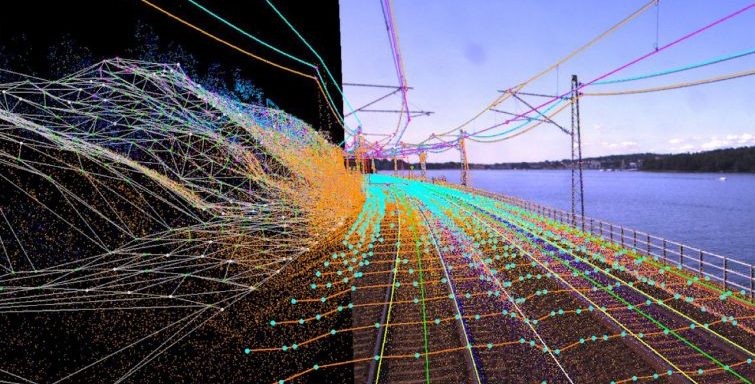Around the world, the rail industry is increasingly adopting light detection and ranging technology (LiDAR) to efficiently capture, process and store data. This allows operators to more easily comply with recent train control regulations, which require data be continuously validated and verified. Additionally, LiDAR’s quick, precise detection of any and all objects that may affect rail performance or integrity can vastly improve both safety and efficiency within the sector.
“Finding track time for data collection without impeding operation is challenging,” said Doug Morrison, rail services director at Bartlett & West, a US based engineering firm.
“LiDAR equipment quickly captures very detailed data by using the reflection time of rapid pulses of laser light to map a surface. This information is used to compute ranges, or distances, to objects,” Morrison explained. With some applications of LiDAR, rail companies are able to continue their daily train operations without interruption.
“Data captured through this technology satisfies multiple historical issues—such as high-wide clearance detection, vegetation and encroachment detection, and utility crossings—all in a single pass.”
In the UK, the county’s innovation agency Innovate UK is seeking to find a new way of mapping the UK’s railway infrastructure by utilizing LiDAR and AI solutions from Swedish engineering company Hexagon. The project, funded by Network Rail, will allow the infrastructure manager to automatically identify and measure railway structures from LiDAR data to improve planning and operations across the rail network. Currently, most rail infrastructure data in the UK is collected manually and is highly labor-intensive, taking analysts months or even years to analyze.
“We anticipate this project will offer us a more efficient way to capture, analyze and measure railway features along 20,000 miles of track, which is important to railway safety and the growth and capacity of our network,” said James Sweeney, Senior Engineer at Network Rail.
The project will utilize LiDAR for faster, high-precision mapping and data collection, while AI will be used to automatically analyze data and perform measurements.
Germany is also embracing LiDAR, as Deutsche Bahn (DB), the German rail company, has recently invested 15 million euros in innovative smart sensor technology aimed at increasing rail traffic punctuality. The project is a joint effort from Deutsche Bahn, Siemens Mobility, Bosch, HERE Technologies and Ibeo Automotive Systems.
LiDAR sensors will be installed and integrated with other technologies to create a reliable image of the train’s environment. Stationary LiDAR installed on tracks can quickly detect any objects that could impact rail performance, as well as almost imperceptible shifts in the landscape that could affect track integrity in the future.
“We are accelerating the digital rail in Germany and thus ensuring more capacity in the network,” said Ronald Pofalla, DB Infrastructure Board Member. “With smart technology, switches and vehicles become more intelligent, and rail traffic noticeably more robust.”


